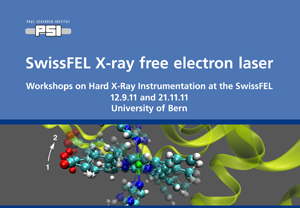Speaker
Rainer Daehn
(PSI)
Description
S.V. Churakov1, R. Dähn1, A. Froideval1, B. Pedrini2
1Nuclear Energy and Safety (NES), Paul Scherrer Institute, CH-5232 Villigen PSI, Switzerland
2SwissFEL Project, Paul Scherrer Institute, CH-5232 Villigen PSI, Switzerland
Abstract:
Clay rich argillaceous rocks are foreseen as natural barriers in many disposal concepts worldwide for environmental protection of radioactive and toxic waste due to their low hydraulic conductivity. The slow migration of pollutants in engineered barriers arises from stochastic motion of cations in the interlayer of clay minerals. An in-depth understanding of the ion diffusion processes in the interlayer of clay minerals, which size is on the order of 1 nm is indispensable for the long term prediction of safety assessments of waste repositories. To date, such processes which occur at time scales ranging from ~10 - 100 ps are accessible only via molecular dynamics simulations [1]. To increase our confidence in numerical models the theoretical calculations of Na, Cs and H2O transport in the interlayer of clays need to be experimentally verified. Water dynamics in nanoporous material and clays is readily probed in neutron scattering experiments [2]. To our best knowledge, a direct measurement of Cs or Na diffusion in the interlayer of clays is not possible at present experimental infrastructure.
Therefore, the ionic transport in the interlayer space of clay minerals is here proposed to be investigated by performing split-pulse X-ray photon correlation spectroscopy (XPCS) measurements of q-dependence correlation times [3], for X-ray FEL pulses separated in time by 10 ps. Such experiments could possibly help (i) to measure the ionic mobility, and (ii) to understand the ion transport mechanism(s) in the interlayer namely Brownian versus non-Brownian diffusion.
The ability of synchrotron-based measurements to obtain a quantitative understanding of the dynamics of disorder in alloys has already been reported in the literature [4, 5]. From their work, Leitner et al. have been able to probe the so far inaccessible atomic-scale diffusion parameter such as the bulk diffusivity of a single atom in a short-range ordered single crystal Cu90Au10 alloy, proving the ability of the XPCS technique to study dynamics of disorder in well-ordered materials. Such results lend strong support to FEL-based XPCS experiments in order to quantify the mobility of the interlayer molecular species in clay minerals at ps and even sub-ps time scales. It is estimated that a single X-ray FEL pulse (containing 1011 hard X-ray photons – with an X-ray energy of 12.4 keV (i.e. a X-ray wavelength of 1 Å) – focused into a 100 100 nm2 spot, will yield a resolution of approximately 3 nm. Under such experimental conditions, the scattering intensity, by e.g. ~1028 Cs atoms located in a montmorillonite sample, is predicted to be close to 1 scattered photon per pixel, for small values of scattering angles in the range 0–2° [6]; such a number of detected scattered photons being probably compatible with the high performances of the PILATUS detector [7]. Note that these calculations are done for a 10 µm-thick montmorillonite sample and a Cs concentration of 1.25 Cs atoms.nm-3. A better understanding of the dependence of atomistic quantities such as e.g. diffusion activation energies on the local atomic structure could thus be gained by taking advantage of the full coherence of the XFEL radiation. Furthermore, such novel quantitative information on the diffusion mobility of the interlayer species in clay materials will serve as experimental input to assist the development of robust geochemical databases on diffusion processes in clay systems for performance assessments of the clay barrier in the deep geological disposal of radioactive waste.
References
[1] G. Kosakowski, S.V. Churakov, T. Thoenen, Clays Clay Miner. 56 (2008) 190-206.
[2] F. González Sánchez, F. Jurányi, T. Gimmi, L. Van Loon, T. Unruh, and L. W. Diamond, J. Chem. Phys. 129 (2008) 174706.
[3] G. Grübel, G.B. Stephenson, C. Gutt, H. Sinn, Th. Tschentscher, Nucl. Instr. and Meth. in Phys. Res. B 262 (2007) 357-367.
[4] M. Leitner, B. Sepiol, L.-M. Stadler, B. Pfau, G. Vogl, Nat. Mater. 8 (2009) 717-720.
[5] S. Brauer, G.B. Stephenson, M. Sutton, R. Brüning, E. Dufresne, S.G.J. Mochrie, G. Grübel, J. Als-Nielsen, D.L. Abernathy, Phys. Rev. Lett. 74 (1995) 2010-2013.
[6] A. Froideval, A. Badillo, J. Bertsch, S. Churakov, R. Dähn, C. Degueldre, T. Lind, D. Paladino, B.D. Patterson, J. Nucl. Mater. 416 (2011) 242-251.
[7] F. Westermeier, T. Autenrieth, C. Gutt, O. Leupold, A. Duri, A. Menzel, I. Johnson, C. Broennimann, G. Grübel, J. Synchrot. Rad. 16 (2009) 687-689.
Author
Rainer Daehn
(PSI)

